Aluminium plate boat fishing boat alloy 5083
Aluminium alloy 5083 is a high-strength, corrosion-resistant marine aluminium widely used for fishing boats, workboats, ferries, and other offshore structures. Its combination of mechanical performance, weldability, and excellent resistance to seawater corrosion makes it a go-to material for boat builders and marine engineers.
Features and Functions
- Excellent seawater corrosion resistance — particularly suited for hulls, decks, and superstructures exposed to saltwater.
- High strength — significantly stronger than common 5xxx series alloys (e.g., 5052), enabling thinner, lighter structures.
- Good weldability — compatible with common welding methods (MIG/GMAW, TIG/GTAW, submerged arc), enabling robust welded joints.
- Workability — can be roll-formed, bent, and machined for hull plating, frames, and structural members.
- Good fatigue resistance — beneficial for hulls subject to cyclic loading from waves and engine vibrations.
- Repairable and recyclable — supports lifecycle maintenance and sustainability.
Typical Marine Applications
- Fishing boat hulls and decks (small to medium-sized commercial fishing vessels)
- Patrol boats, rescue craft, and recreational boats
- Workboats, supply vessels, and crew transfer vessels
- Hull stringers, frames, bulkheads, and other structural members
- Superstructures, deckhouses, and components exposed to harsh marine environments
5083 is specified across multiple international standards. Typical references include:
- ASTM B928 / B928M — Standard Specification for Aluminum-Alloy Plate, Sheet, and Strip for Marine Applications
- EN 485-2 / EN 573 / EN 545 — European standards for chemical composition and mechanical properties
- ISO 6361 — Wrought aluminium and aluminium alloys — Sheets, strips and plates
- ABS, DNV-GL, Lloyd’s Register — classification society rules for shipbuilding and materials
Chemical Composition (Typical Limits)
| Element | Typical (wt%) | Standard Range (EN/ASTM typical limits) |
|---|---|---|
| Al | Balance | Balance |
| Magnesium (Mg) | 4.0 — 4.9 | 4.0 — 4.9 |
| Manganese (Mn) | 0.4 — 1.0 | 0.4 — 1.0 |
| Chromium (Cr) | 0.05 — 0.25 | 0.05 — 0.25 |
| Iron (Fe) | ≤ 0.40 | ≤ 0.4 |
| Copper (Cu) | ≤ 0.10 | ≤ 0.1 |
| Zinc (Zn) | ≤ 0.25 | ≤ 0.25 |
| Titanium (Ti) | ≤ 0.15 | ≤ 0.15 |
| Others (each) | ≤ 0.05 | ≤ 0.05 |
| Others (total) | ≤ 0.15 | ≤ 0.15 |
Notes:
- Typical commercial 5083 composition centers around 4.5% Mg, ~0.7% Mn and low Cr for grain control and corrosion resistance.
- Exact composition limits depend on standard and manufacturer certificate.
Mechanical Properties (Typical by Temper)
| Property | H111 (near-annealed) | H112 / O (softened) | H116 / H321 / https://www.marine-al.com | H32 / H116 variants |
|---|---|---|---|---|
| Tensile strength (MPa) | 290 — 330 | 275 — 305 | 305 — 355 | 300 — 350 |
| Yield strength 0.2% (MPa) | 130 — 200 | 125 — 190 | 145 — 275 | 145 — 260 |
| Elongation (%) | 10 — 22 | 12 — 25 | 8 — 20 | 9 — 20 |
| Hardness (HB) | ~60 — 80 | ~55 — 75 | ~70 — 95 | ~65 — 90 |
Notes:
- Values vary by product form (plate thickness), temper, and standard. For marine plates commonly used in hulls, H116 (or H321 for stabilized tempers) is widely specified for improved stress-corrosion cracking resistance.
- Always check mill test certificate (MTC) for batch-specific values.
Tempering and Heat Treatment Conditions
5083 is a non-heat-treatable alloy. Strength is achieved through cold working and controlled thermal processes (strain hardening and stabilization). Common tempers:
| Temper | Description | Common Use |
|---|---|---|
| O (annealed) | Solution heat treated and naturally cooled to soften | Forming, deep drawing |
| H111 | Slightly strain-hardened from O | Moderate forming, limited strength |
| H112 | As-fabricated temper | General plate supply |
| H116 / H321 | Strain-hardened and thermal-stabilized or aged to resist sensitization and stress corrosion cracking (SCC) | Marine hulls — improved SCC resistance |
| H32 | Strain-hardened then stabilized by low-temperature heat treatment | Moderate strength and formability |
Important:
- For marine applications, H116 or similarly stabilized tempers are commonly specified to improve resistance to intergranular corrosion and SCC after welding.
- Avoid solution heat treatment for 5xxx series in service; post-weld heat treatment is generally not used.
Welding and Fabrication
- Welding methods: MIG (GMAW), TIG (GTAW), Submerged Arc (SAW), and spot welding are commonly used.
- Filler alloys: 5356 (Al-Mg) is the most common filler for welding 5083 due to good strength and corrosion resistance; 5183 is another option in some cases.
- Preheat: Not typically required for 5083, but thickness and joint design can influence practice. Avoid high heat input to minimize loss of strength in heat-affected zones (HAZ).
- Post-weld: Mechanical properties in the HAZ decrease compared to base metal; design must account for HAZ strength reduction. Use of H116/H321 tempers helps with SCC resistance after welding.
- Bending/radius: Minimum bend radii depend on temper and thickness. Use proper forming practices to avoid cracking.
Corrosion Resistance
- 5083 exhibits excellent resistance to seawater and marine atmosphere due to its high Mg content and controlled impurity levels.
- It is resistant to general corrosion and pitting in chloride-containing environments but can be susceptible to stress-corrosion cracking particularly in high-strength tempers — hence the use of stabilized H116/H321 tempers for marine hulls.
- Protective coatings (paint, anodizing) and sacrificial anodes (zinc or aluminum anodes) are commonly used in boat construction to further reduce corrosion risk.
Typical Plate Thickness and Formats
| Application Area | Typical Thickness Range (mm) |
|---|---|
| Small boat hull plating | 2 — 6 mm |
| Commercial fishing vessel hulls | 4 — 12 mm |
| Workboats / Patrol boats | 6 — 20 mm |
| Structural members / frames | 6 — 50+ mm |
Notes:
- Thickness selection depends on vessel size, classification rules, loading, and local regulations.
- Plate is commonly supplied in mill-finish, single- or double-sided shot-blasted/extruded finish, or coated as required.
Physical Properties
| Property | Typical Value |
|---|---|
| Density | 2.66 — 2.70 g/cm3 |
| Melting range | ~590 — 650 °C |
| Modulus of Elasticity (E) | ~69 GPa |
| Thermal conductivity | ~120 — 140 W/m·K |
| Electrical conductivity | ~34 — 36 % IACS |
| Coefficient of thermal expansion | ~23.5 ×10^-6 /°C (20–100°C) |
Design and Structural Considerations
- Structural design must account for anisotropy introduced by rolling and weld HAZ softening.
- Fatigue design: aluminium has lower crack propagation thresholds than steel; design for safe life or incorporate crack-stopping features and conservative detail design.
- Fasteners: use compatible alloys (aluminium fasteners, stainless steel with insulating washers, or specialized marine fasteners) to avoid galvanic corrosion.
- Protective measures: surface treatments, proper drainage, cathodic protection, and regular maintenance extend service life.
Quality Control and Testing
- Mill Test Certificate (MTC) — chemical and mechanical test reports must accompany each plate batch.
- Non-destructive testing (NDT): ultrasonic testing (UT) for thickness and defect detection; dye-penetrant for surface cracks; radiography where required.
- Tensile tests, hardness tests, and corrosion testing per relevant classification society rules and standards.
- Welding procedures must be qualified (WPS/PQR) and welders certified per the applicable standard (e.g., EN ISO 9606, ASME).
| Item | Specification |
|---|---|
| Alloy | 5083 |
| Temper | H116 (stabilized) |
| Thickness | 4.0 mm (example) |
| Plate size | Up to 3000 mm width × custom length |
| Surface finish | Mill finish or shot-blasted |
| Chemical verification | Per EN 573 / ASTM B928 |
| Mechanical properties | Yield ≥ 145 MPa, Tensile ≥ 300 MPa (confirm per MTC) |
| Welding filler | 5356 (or per welding spec) |
| Certification | MTC per EN 10204 3.1 / classification society if required |
Advantages vs. Competing Materials
- Versus mild steel: Lower weight (about one-third), superior corrosion resistance in seawater (less maintenance), easier to fabricate without heavy equipment; however, aluminium requires more careful detail design for fatigue and impact.
- Versus other aluminium alloys (e.g., 6061): 5083 has superior corrosion resistance in marine environments and better weldability; 6061 may have higher strength in heat-treated condition but poorer corrosion resistance and weld performance.
- Versus composite/GRP: 5083 offers superior impact resistance, recyclability, and repairability; composites may be lighter for complex shapes but can be more difficult to repair.
Handling, Storage, and Maintenance
- Store plates in a dry, ventilated area off the ground, protected from contact with dissimilar metals and contaminants.
- Avoid prolonged exposure to alkaline or acidic environments and avoid contact with iron/steel pieces that can cause galvanic corrosion.
- Regular inspection for pitting, crevice corrosion, and fastener integrity; maintain protective coatings and anode systems.
Related Products
Marine 5086 aluminum plate
5086 Aluminum Plate belongs to the 5xxx series of aluminum-magnesium alloys. Its hallmark is a high magnesium content—generally between 4.0% and 4.9%—which delivers enhanced corrosion resistance, particularly against saltwater and marine atmospheric conditions.
View DetailsMarine heavy duty aluminum plate
Marine Heavy Duty Aluminum Plates Sheets generally refer to thick aluminum alloy plates and heavy gauge sheets produced from marine-grade alloys such as 5083, 5086, 5059, and 5383.
View DetailsMarine aluminum steel clad plate
Aluminum / Steel Clad Plates consist of a sandwich construction in which a layer of marine-grade aluminum alloy is metallurgically bonded to a steel substrate.
View DetailsMarine 5052 aluminum plate
Marine 5052 Aluminum Plate is noted for its exceptional resistance to corrosion caused by seawater, salt spray, and marine atmospheres.
View DetailsMarine 5059 aluminum plate
Marine 5059 Aluminum Plate is distinguished by its high magnesium content and carefully balanced alloying elements, designed to maximize strength without compromising corrosion resistance.
View DetailsMarine 5083 aluminum plate
Marine 5083 Aluminum Plate belongs to the 5xxx series of aluminum-magnesium alloys and is classified as a non-heat-treatable alloy. Its high magnesium content (typically 4.0–4.9%) enhances its corrosion resistance, especially against seawater-related degradation such as pitting and stress corrosion cracking.
View DetailsRelated Blog
Marine Grade Aluminum Plate 5083
When it comes to building robust, durable, and corrosion-resistant marine vessels and offshore structures, Marine Grade Aluminum Plate 5083 stands as a premier choice in the industry.
View Details5083 marine grade aluminium plate
When it comes to marine construction and applications necessitating optimal performance in corrosive saltwater environments, 5083 marine grade aluminium plate stands out as one of the most reliable and versatile materials.
View DetailsAluminum Sheet Plate alloy 5083 H111 for boat application
When it comes to manufacturing high-performance boats that demand strength, corrosion resistance, and long-lasting durability, Aluminum Sheet Plate Alloy 5083 H111 stands out as a superior material.
View DetailsMarine Grade Plate Aluminum Sheet 5083 O H116
When it comes to marine construction and offshore applications, selecting the right material is crucial. Marine Grade Aluminum Plate 5083 O H116 stands out as a top-tier solution, blending excellent mechanical properties, corrosion resistance.
View DetailsMarine 5083 5086 H116 Checkered Aluminum Plate for Deck Board
Premium Marine 5083/5086 H116 Checkered Aluminum Plate designed for deck boards. Boasting exceptional corrosion resistance, high strength, and durability, it meets marine industry standards for optimal performance in harsh sea environments.
View Details5083 marine grade aluminium plate for ship building
5083 Marine Grade Aluminium Plate: The Backbone of Modern ShipbuildingWhen it comes to building durable, efficient, and lightweight vessels, 5083 marine grade aluminium plate stands out as a premier material choice.
View Details

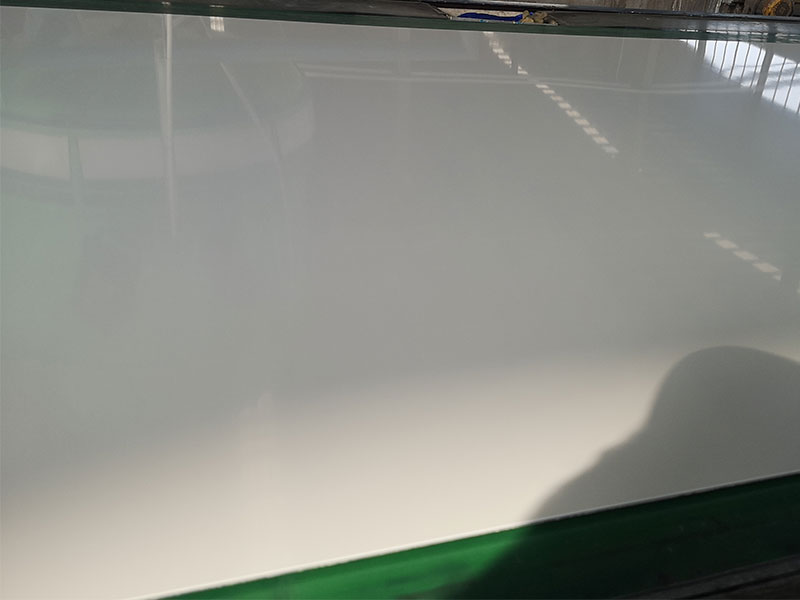
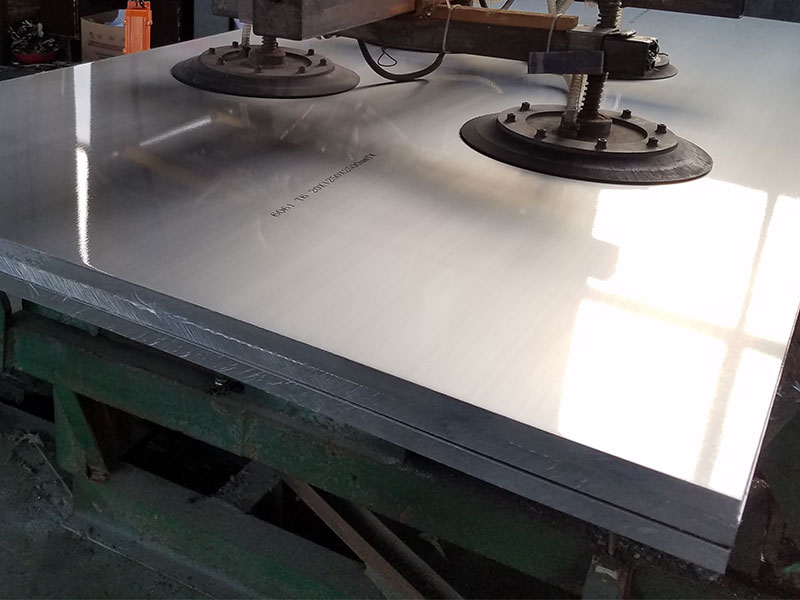
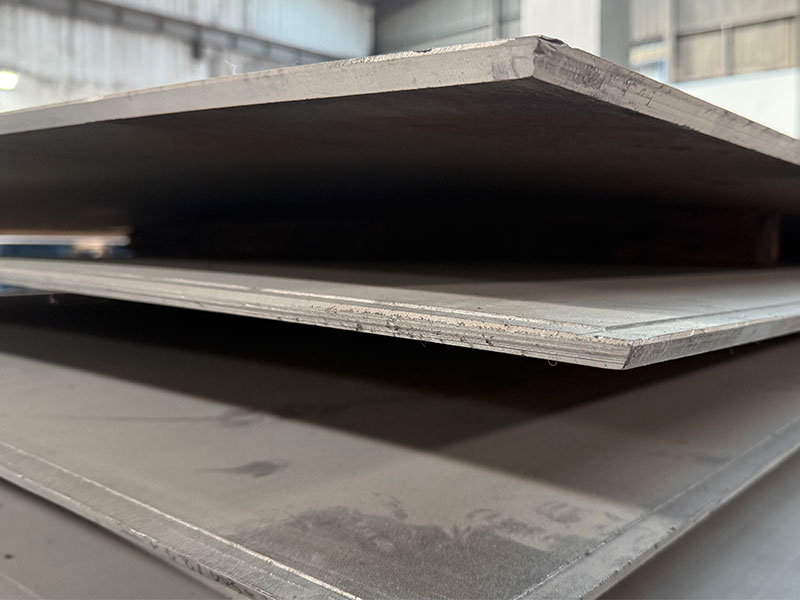
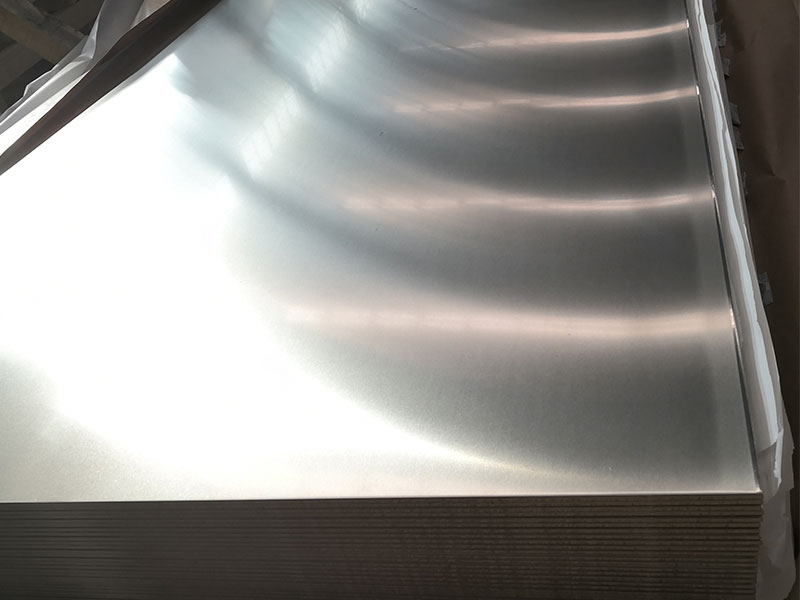
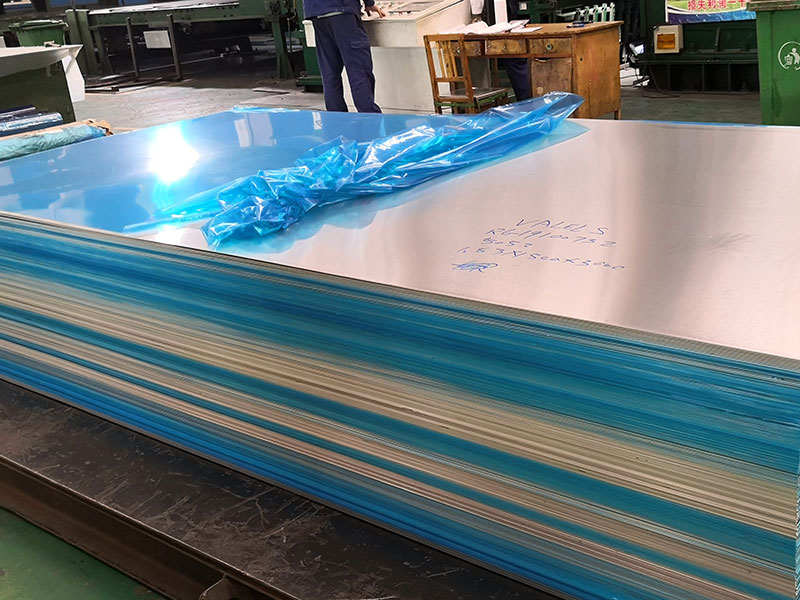
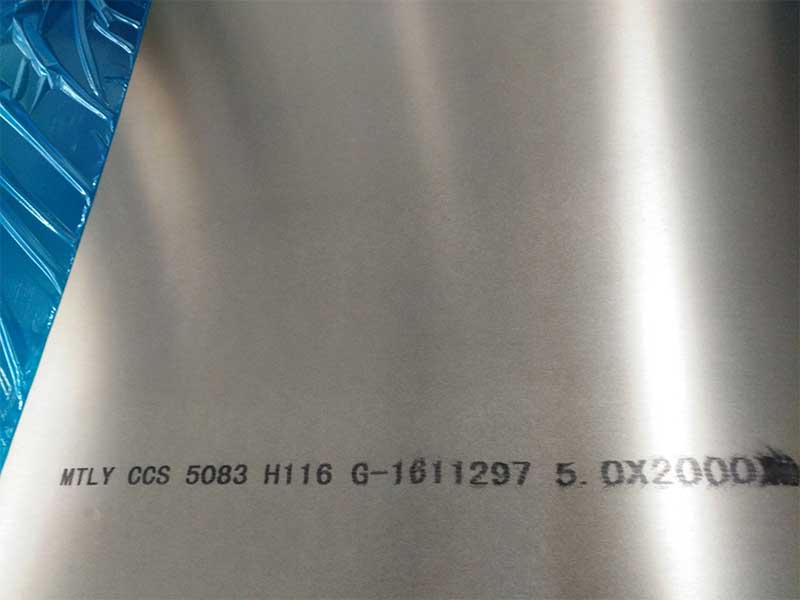






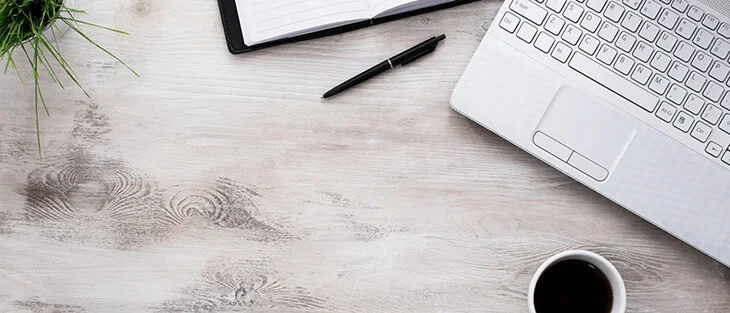
Leave a Message